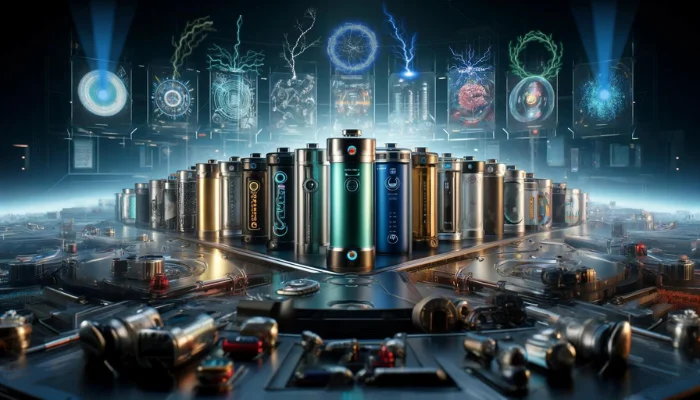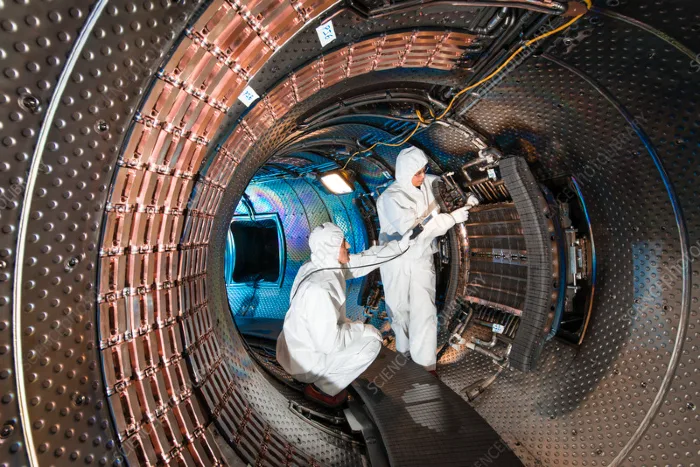Hawaii’s transition from fossil fuels to clean energy reached a significant milestone on September 1, 2022, with the shutdown of its last coal plant on Oahu. This move eradicated 180 megawatts of fossil-fueled power from the grid, aligning with Hawaii’s ambitious goal to eliminate fossil fuel electricity by 2045. However, this raised a critical question: How can a reliable grid be maintained while transitioning from traditional fossil fuel plants to a diverse range of renewable energy sources, dependent on weather conditions?
Hawaii’s Innovative Solution
Hawaii’s answer to this challenge is a groundbreaking battery storage system.
The Kapolei Energy Storage project, developed and owned by Houston-based Plus Power, began commercial operations a couple of weeks ago, just before Christmas on Oahu’s industrial west side. The system, featuring 158 Tesla Megapacks, offers a cutting-edge solution to the problem of energy storage and grid stability.
The project secured financing of $219 million in total, which includes $188 million in non-recourse construction debt and $31 million in letters of credit.

Revolutionizing Energy Storage
Kapolei’s batteries charge and discharge based on signals from Hawaiian Electric, providing 185 megawatts of instantaneous discharge capacity. This matches the output of the old coal plant but with a remarkable 250-millisecond response time. Unlike traditional power generation, the battery system stores energy from the grid when renewable generation is high and redistributes it during peak demand in the evening.
“It feels incredible to be part of what Hawaii and Hawaiian Electric are doing to get to 100% renewable energy and to play this enabling role to help them get one step closer,” says Plus Power Executive Chairman Brandon Keefe.

Overcoming Challenges
The path to completion faced several setbacks, including delays due to Covid-19 and logistical challenges given Hawaii’s remote location. The project was initially slated to commence before the coal plant’s retirement but faced delays into 2022 and 2023. Despite these hurdles, Kapolei’s grid integration precedes several other large solar and battery projects intended to replace the coal plant’s production with clean energy.
The project also faced pushback from environmentalists when it was released that the batteries will
A New Framework for Grid Stability
Coal plants and grid batteries function differently, necessitating a fresh approach to maintaining grid stability. The former coal generator provided energy, capacity, and essential grid services. Kapolei’s battery replaces the latter two, matching the coal plant’s power output and offering vital grid services to maintain operational parameters.
The battery’s unique capabilities include providing “synthetic inertia,” responding to real-time grid deviations, and a fast frequency response as a second line of defense in emergencies.
Collaboration with Renewable Energy
Although the 565 megawatt-hours of storage cannot directly replace the coal plant’s energy production, it complements the island’s thriving solar sector. “We’re enabling the grid to add more clean renewable energy to the system to replace the energy from the coal plant,” explains Keefe.
While Keefe’s statement is technically accurate, what the Plus Power executive chairman is leaving out is the fact that the massive energy storage facility will most often be powered by oil.

A Complex Transition from Coal to Oil-Powered Batteries
In 2015, Hawaii made a bold commitment to renewable energy, becoming the first U.S. state to mandate a complete transition to renewable fuels for electricity generation by 2045. This historic legislation, signed by Gov. David Ige, aimed to position Hawaii as a leader in the global shift away from fossil fuels.
Yet, recent developments (and reality) have highlighted the complexities and challenges of this ambitious goal. Spoiler alert, they’re not going to make it!
The Reality of Transitioning Set In Hard
As Hawaii moves away from fossil fuels, the state faces unforeseen hurdles. The closure of Hawaii’s last coal-fired power plant, which provided 15-20% of Oahu’s electricity, has led to reliance on alternative sources, including the Kapolei Energy Storage Facility, which was intended to offset the loss of the coal plant.
Oil as a Surprising Interim Solution
Hawaiian Electric Co. (HECO) is now grappling with a significant dilemma. Due to insufficient wind, solar, or battery storage to replace the AES plant’s output, HECO may have to resort to using oil to power the Kapolei Energy Storage Facility.
So, what exactly is going to charge up the Kapolei Energy Storage Facility?
Oil. And once locals realized that their coal plant would be replaced with a technology that uses a more expensive fossil fuel, concerns were raised loudly.
Jay Griffin, the former chair of the Public Utilities Commission (PUC), expressed concerns about the financial and environmental impacts of this transition. “Oil prices don’t have to be much higher for this to look like the highest increase people will have experienced,” Griffin stated. “And it’s not acceptable. We have to do better.”

Hawaii’s journey from coal to renewable energy, now temporarily detouring through oil, reflects the nuanced path towards sustainable energy solutions. It underscores the need for careful planning, market considerations, and flexibility in transitioning to a greener future. As the state continues its journey towards its 2045 goal, the lessons learned will be invaluable for others following a similar path.
More To Discover
- Trees Are The Unexpected Climate Challengers on the Great Plains
- Turning Old Smartphones Into Desk Art: A Simple Fix to a Big Waste Problem
- What Happens When There’s Less Wind To Power Our Turbines? Illinois’ Is Dealing With That Now.
- UK’s Chicken Industry in Crisis: 80 Million Deaths Point to Unsustainable Practices
Conclusion
Hawaii’s shift to the Kapolei Energy Storage system marks a significant leap towards sustainable energy. By replacing its last coal plant with an advanced battery system, Hawaii demonstrates a path forward for other regions and countries. This transition not only promises a greener future but also illustrates the feasibility and benefits of adopting renewable energy on a large scale, setting a precedent for the rest of the world.





















